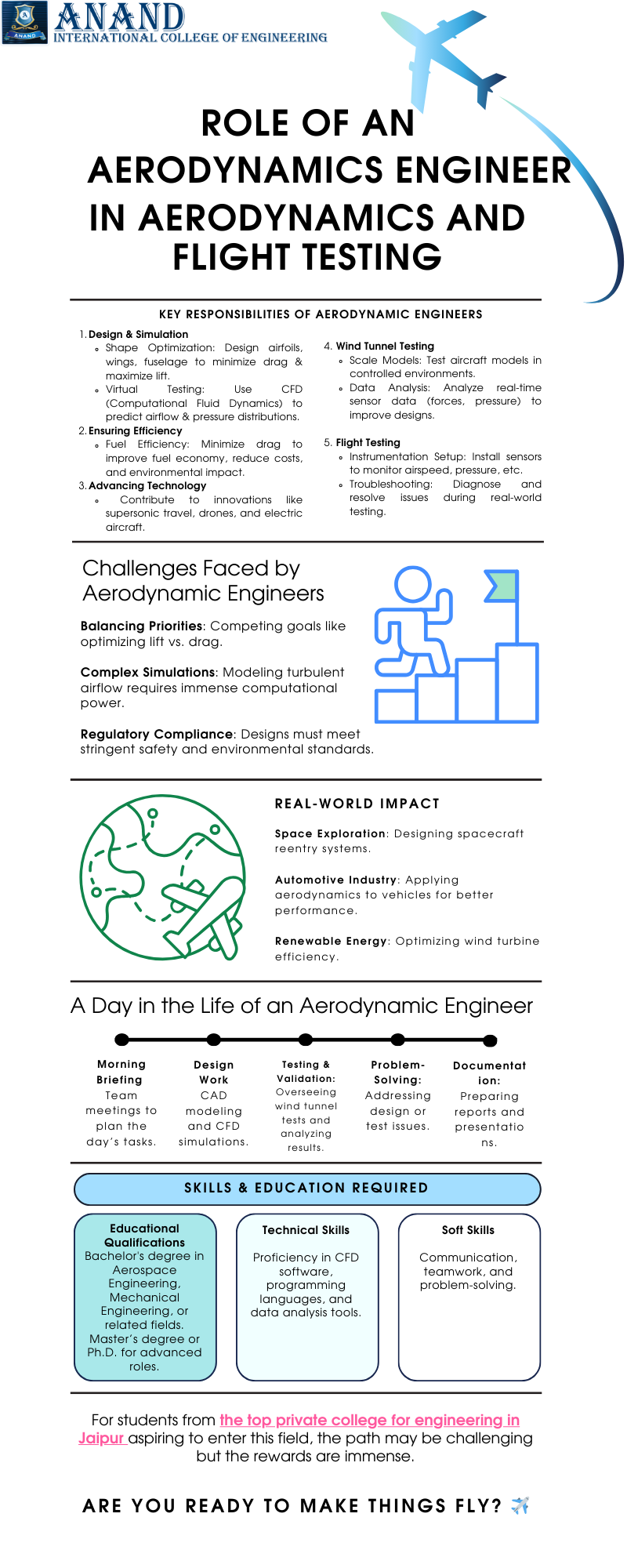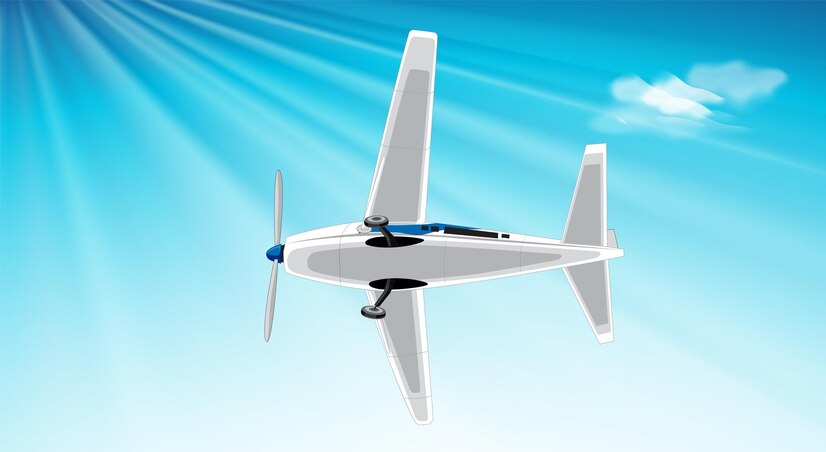Aerodynamic engineers play a pivotal role In the vast expanse of the aerospace industry where innovative technology meets the wonder of flight. These professionals stand at the intersection of science and engineering from the top private college for engineering in Jaipur and ensure that every aircraft in the sky is efficient, safe and capable of meeting its mission requirements. But what exactly does an aerodynamic engineer do and how do they contribute to aerodynamics and flight testing? This article aims to unravel the fascinating world of aerodynamic engineering and its significance in modern aviation.
Understanding Aerodynamics
At its core aerodynamics is the study of how air interacts with solid objects especially those in motion like airplanes. It involves principles of fluid mechanics that explore how air flows around structures and how forces such as lift, drag and thrust influence flight. For an aircraft to soar its design must balance these forces optimally.
Aerodynamic engineers are the architects behind this balance. They analyze and optimize designs to ensure efficiency, safety and performance. Their work doesn’t stop at theory as they actively contribute to the practical aspects of testing and refining aircraft during development.
The Role of an Aerodynamic Engineer
1. Design and Simulation
The journey of an aircraft begins long before it takes to the skies. Aerodynamic engineers are involved in the conceptualization and design phases and they use advanced computer-aided design (CAD) tools and simulation software.
- Shape Optimization: They design airfoils, wings and fuselage shapes to minimize drag and maximize lift. Every curve and contour is meticulously analyzed to ensure it complements the overall performance goals.
- Virtual Testing: Computational Fluid Dynamics (CFD) simulations allow engineers to predict airflow patterns, pressure distributions and thermal effects without building a physical prototype.
2. Wind Tunnel Testing
Simulations are invaluable but real-world testing is indispensable. Wind tunnels are specialized facilities where air flows can be controlled and studied. They play a critical role in evaluating aircraft performance.
- Scale Models: Engineers test scaled-down models of aircraft in wind tunnels to observe how air interacts with the design under different conditions.
- Data Analysis: Sensors and instrumentation provide real-time data on forces and pressure which engineers analyze to identify areas of improvement.
3. Flight Testing
Once an aircraft prototype is ready it undergoes rigorous flight testing to validate its design under real-world conditions. Aerodynamic engineers collaborate closely with test pilots and other teams to ensure accurate data collection and interpretation.
- Instrumentation Setup: Engineers install sensors on the aircraft to measure airspeed, pressure and other critical parameters during flight.
- Troubleshooting: If anomalies arise during tests then aerodynamic engineers are at the forefront of diagnosing and resolving issues.
4. Ensuring Efficiency
Fuel efficiency is a top priority in modern aviation. Aerodynamic engineers strive to reduce drag which directly impacts an aircraft’s fuel consumption. By refining designs they help airlines save costs and reduce environmental impact.
5. Advancing Technology
The aerospace industry is ever-evolving with innovations such as supersonic travel, drones and electric aircraft reshaping the landscape. Aerodynamic engineers contribute to these advancements by developing new materials, techniques and concepts.
Challenges Faced by Aerodynamic Engineers
The journey to optimize an aircraft’s performance is not without hurdles:
- Balancing Competing Priorities: Improving one aspect like lift can sometimes increase drag or compromise stability. Engineers must find the perfect equilibrium.
- Complex Simulations: Accurately modeling airflow especially in turbulent conditions requires immense computational power and expertise.
- Regulatory Compliance: Designs must meet stringent safety and environmental standards that add another layer of complexity.
Real-World Impact of Aerodynamic Engineers
The contributions of aerodynamic engineers extend beyond the aviation industry:
- Space Exploration: Engineers design spacecraft reentry systems and ensure they can withstand extreme conditions while maintaining stability.
- Automotive Industry: Principles of aerodynamics are applied to improve vehicle efficiency and performance.
- Renewable Energy: Wind turbines rely on aerodynamic principles for maximum efficiency.
A Day in the Life of an Aerodynamic Engineer
A typical day for an aerodynamic engineer is a blend of analysis, collaboration and hands-on work:
- Morning Briefings: The day often begins with team meetings to review progress and plan tasks.
- Design Work: Engineers spend a significant portion of their day working on CAD models or running CFD simulations.
- Testing and Validation: They may oversee wind tunnel experiments or analyze data from recent tests.
- Problem Solving: Challenges are part of the job whether it’s tweaking a design or troubleshooting unexpected test results.
- Documentation and Reporting: Detailed reports and presentations are crucial for communicating findings to stakeholders.
Skills and Education Required
To excel as an aerodynamic engineer one needs a robust educational background and a specific skill set:
- Educational Qualifications: A bachelor’s degree in aerospace engineering, mechanical engineering or a related field is essential. Advanced roles often require a master’s degree or PhD.
- Technical Skills: Proficiency in CFD software, programming languages and data analysis tools is crucial.
- Soft Skills: Communication, teamwork and problem-solving abilities are equally important as aerodynamic engineering is a collaborative field.
Conclusion
The role of an aerodynamic engineer in aerodynamics and flight testing is indispensable to the aerospace industry. From designing sleek aircraft shapes to ensuring safety during flight tests these professionals are the unsung heroes behind every successful flight.
For students from the best college for engineering in Jaipur aspiring to enter this field, the path may be challenging but the rewards are immense. Aerodynamic engineering offers an opportunity to combine creativity and technical prowess that contributes to innovations that shape the future of aviation and beyond. So if the idea of making things fly excites you then this might just be your calling.


